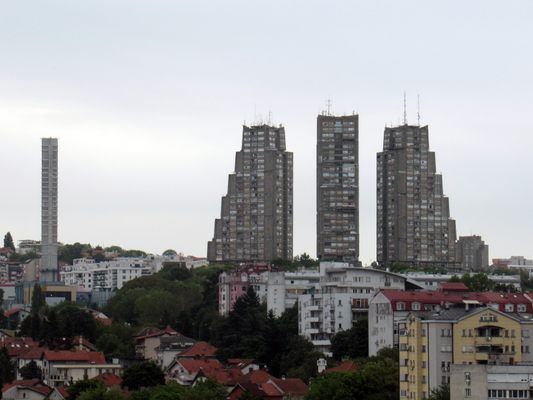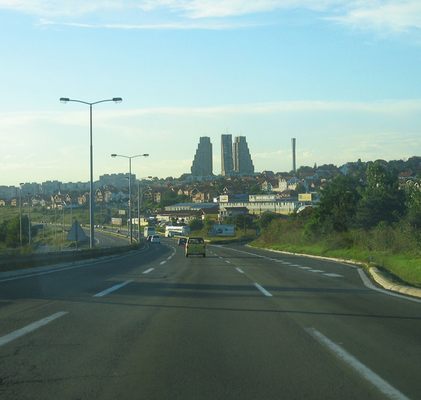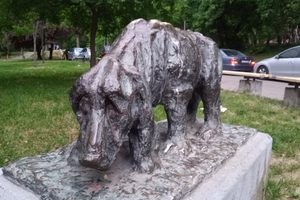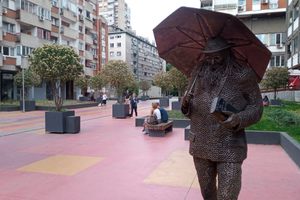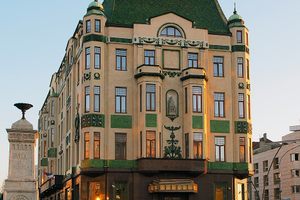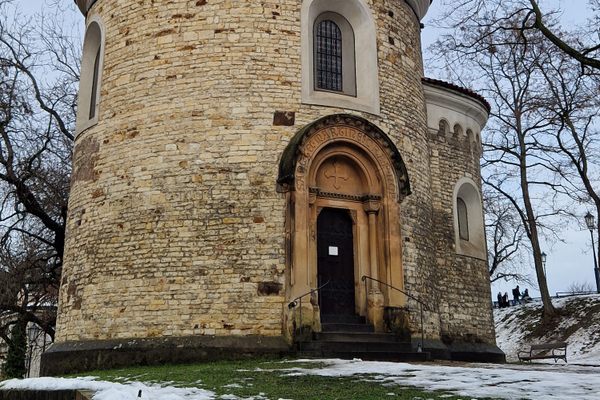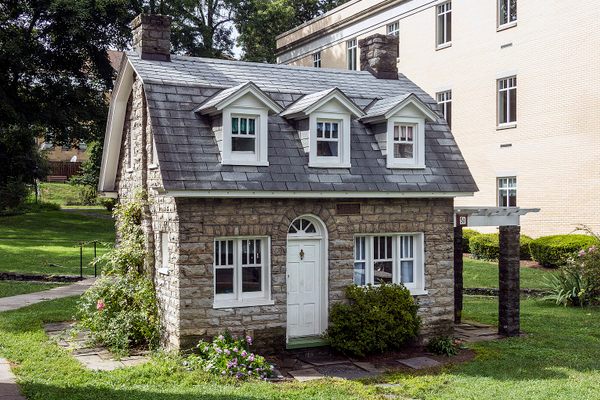About
Opposite the Western City Gate is a group of solitaires that represent the Eastern City Gate of Belgrade. Known locally as Rudo, their construction was supervised by architect Dragoljub Mićović who was born in the town of Rudo in eastern Bosnia.
Many writers have considered the group of solitaires a symbolic "gate" in the eastern end of Belgrade much like its western counterpart. It is said that their forms are akin to the jaws of lathes or milling machines for metal, highlighting the successes of the working people and the Socialist Industrial Revolution. The resemblance to this piece of machinery is particularly apparent in aerial footage.
The fact that the buildings are neither officially nor locally called "lathes" or a "milling machine" can be attributed to the fact that at the end of the 1970s, Socialist Realist art and architecture had largely been surpassed, and were consequentially met with a degree of sneer. Rudo is instead its official name, a town on which Mićović authored much literature.
All in all, it's another example of extraordinarily unique Serbian architecture from the Yugoslav era.
Related Tags
Balkans Road Trip: Serbia, Croatia & Bosnia and Herzegovina
Traverse the beauty and history of the Balkans through locals' stories.
Book NowPublished
May 18, 2023

